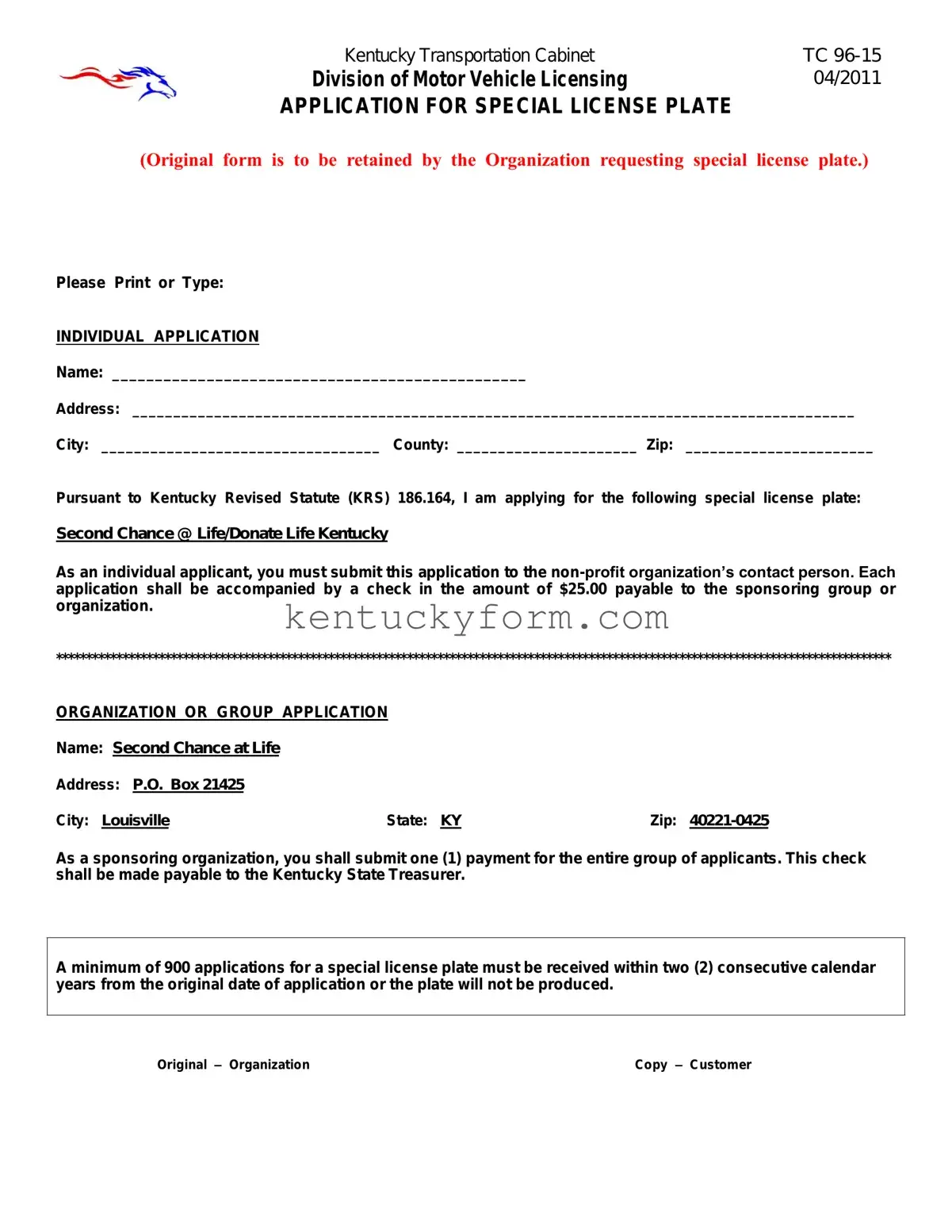The TC 96-15E form, integral for applying for special license plates in Kentucky, shares similarities with various forms and applications across different states and contexts, each designed to capture specific information for a unique purpose. One such document is the DMV Special Interest License Plate Application found in states like California. This form shares the fundamental purpose of allowing citizens to apply for specialty license plates, which often support charitable organizations or show allegiance to a cause, educational institution, or hobby. Both forms require applicants to provide personal information and specify the type of special plate they are requesting, serving as a bridge between governmental licensing procedures and individual expression.
Another similar document is the Personalized License Plate Application used in many states, which, like the TC 96-15E, allows for a more personalized vehicle identification. Though focused more on customization of the license plate number or lettering rather than supporting a specific organization, it similarly demands applicant details and their specific request to be detailed in writing. This process underscores the blend of personal preference with state regulation, a characteristic shared with the Kentucky form in providing an avenue for individuals to express their identities or interests through their vehicle's license plate.
The Application for Disability Parking Plaque or Plate bears resemblance as well, notably in its structured request for personal and vehicular information to obtain a specific type of license plate. While the primary purpose diverges by focusing on accessibility needs rather than personal expression or support for a cause, both documents serve as gateways for individuals to access special designations that meet their specific circumstances, guided by strict eligibility criteria and procedural requirements.
Vehicle Registration Application forms, while broad in their application and not limited to special designations, share a foundational similarity with the TC 96-15E. These forms are essential for the lawful registration of a vehicle within a state and require detailed information about the vehicle owner, the vehicle itself, and the type of registration or plates being sought. The section in the TC 96-15E about sponsoring organizations hints at a collective effort towards a common goal, paralleling how some vehicle registration forms can cater to commercial or fleet registrations under a single entity.
Non-Profit Organization Vehicle License Plate Form, found in some jurisdictions, is designed explicitly for non-profit organizations to obtain license plates that reflect their association, closely mirroring the organizational aspect of the TC 96-15E application. Both forms recognize the significance of groups or organizations in the process, either as entities seeking recognition through specialty plates or as sponsors for such initiatives, emphasizing the community or collective identity in the realm of vehicle registration and licensing.
The Historic Vehicle License Plate Application offers another parallel, intended for owners of vehicles that qualify for historic registration due to their age or significance. Similar to the TC 96-15E, this form caters to a niche but passionate demographic, allowing them to showcase their interest via their vehicle’s license plate. Both forms necessitate proof of eligibility – in the TC 96-15E through a minimum number of applications and in the historic vehicle application through age or authenticity criteria – highlighting the specialized nature of the request.
Lastly, the Special Event License Plate Order Form, which is used to create temporary license plates for specific events or purposes, shares the concept of using vehicle plates for short-term expression or identification. However, unlike the TC 96-15E’s long-term and potentially renewable nature, these are meant for limited durations. Both forms, though, underscore the versatility of license plates as mediums for communication, whether for permanent identification or temporary celebration.

